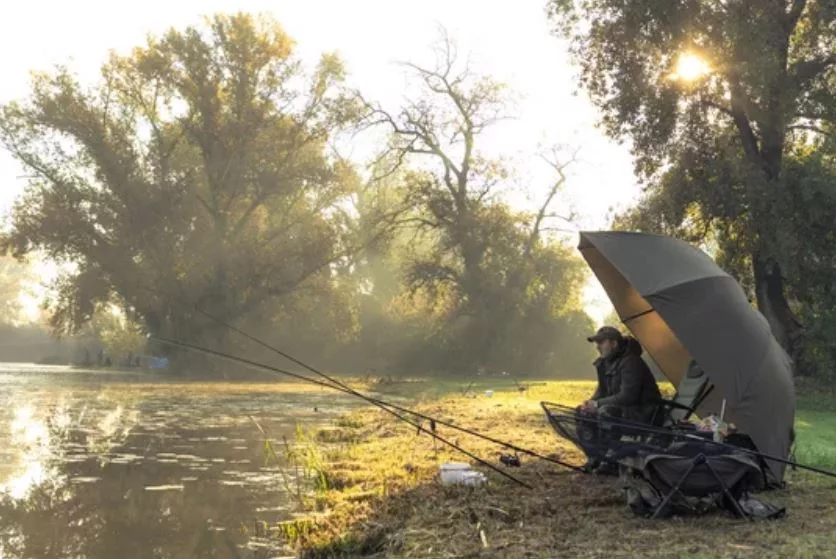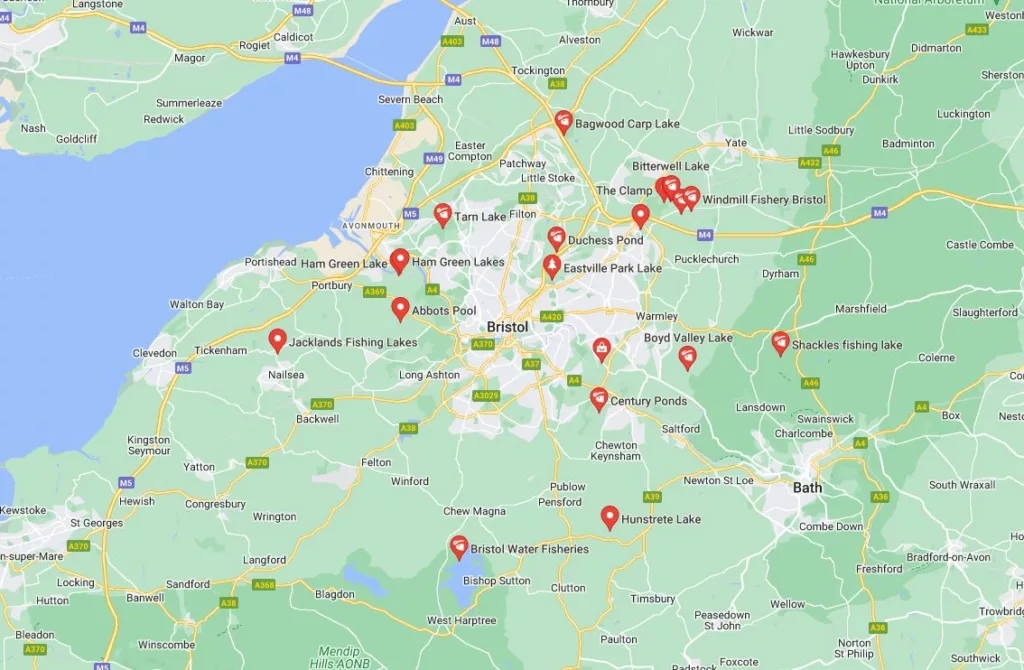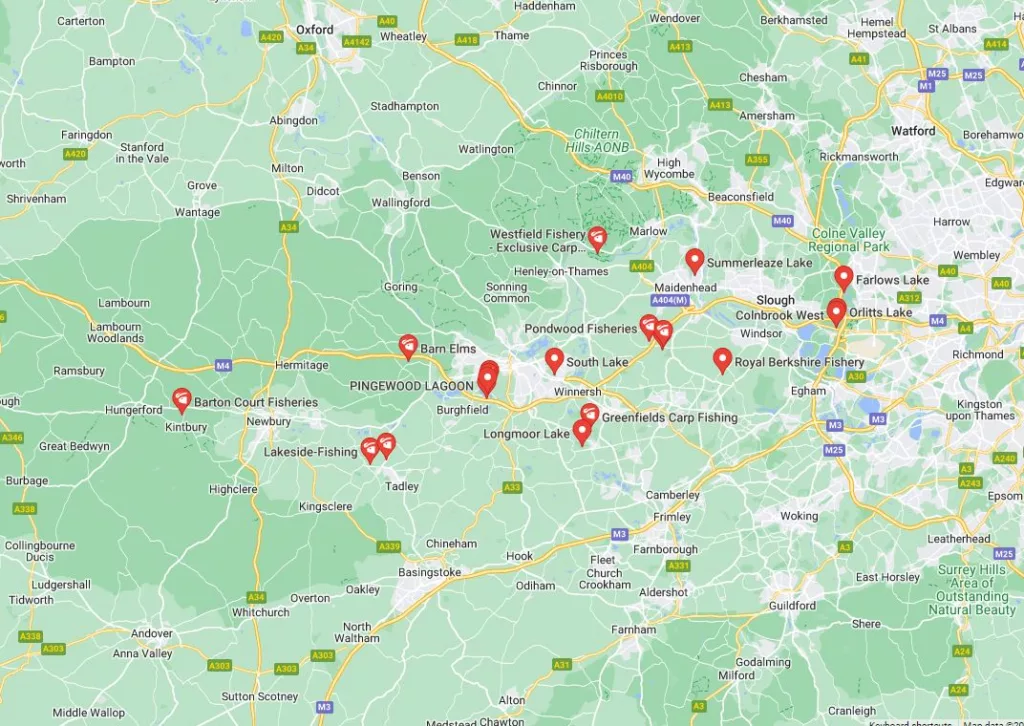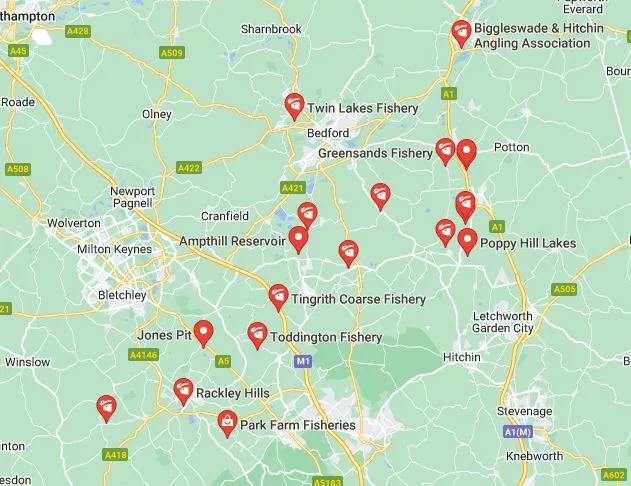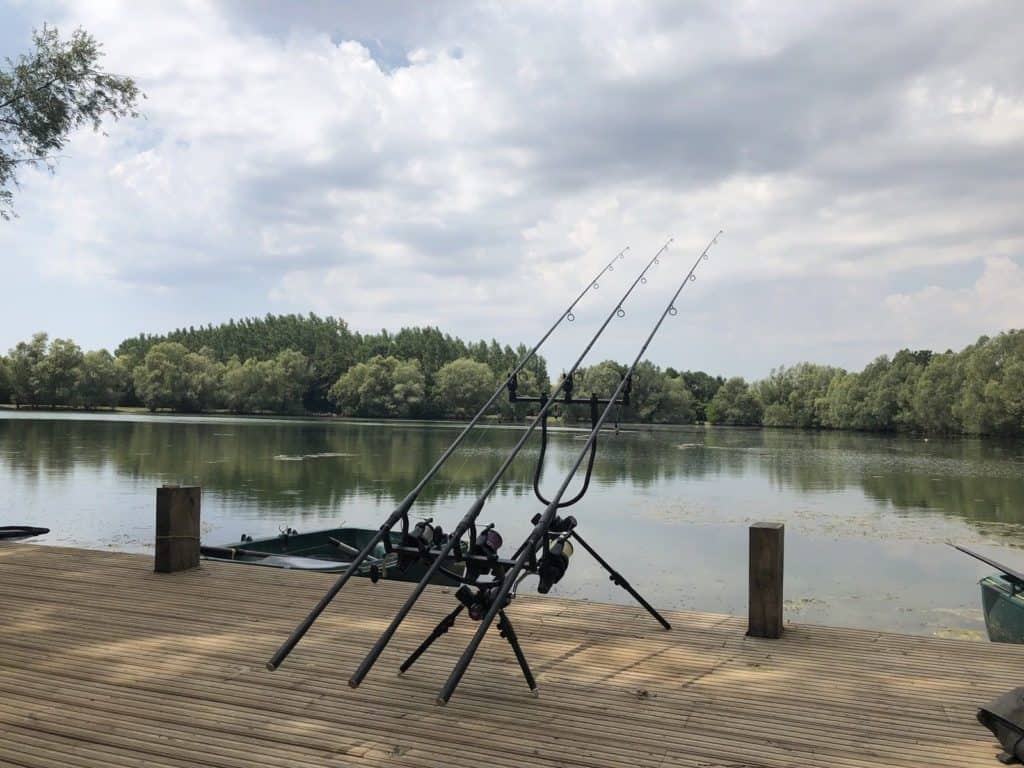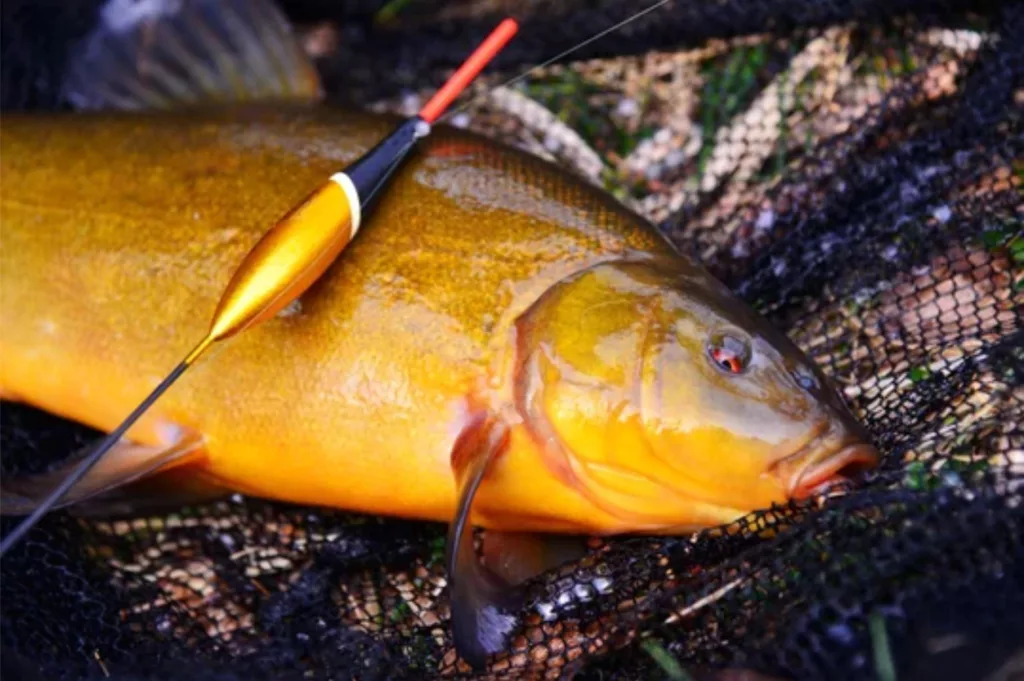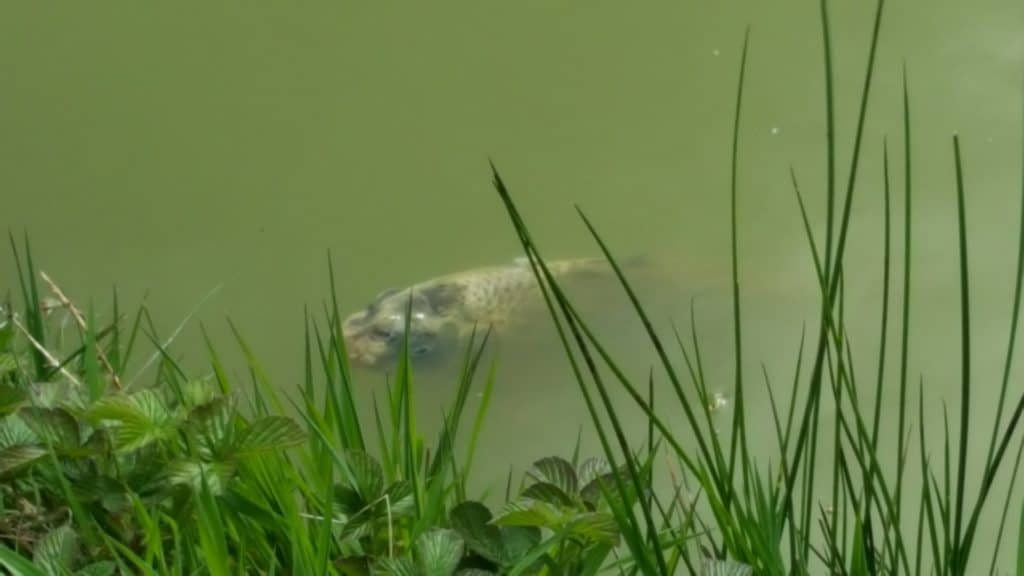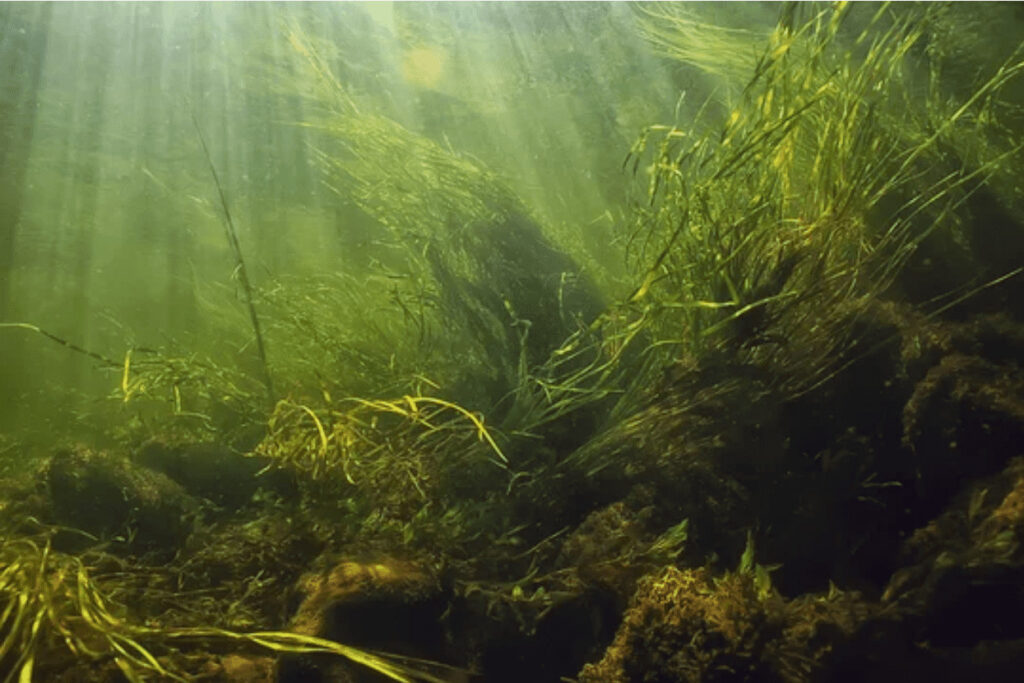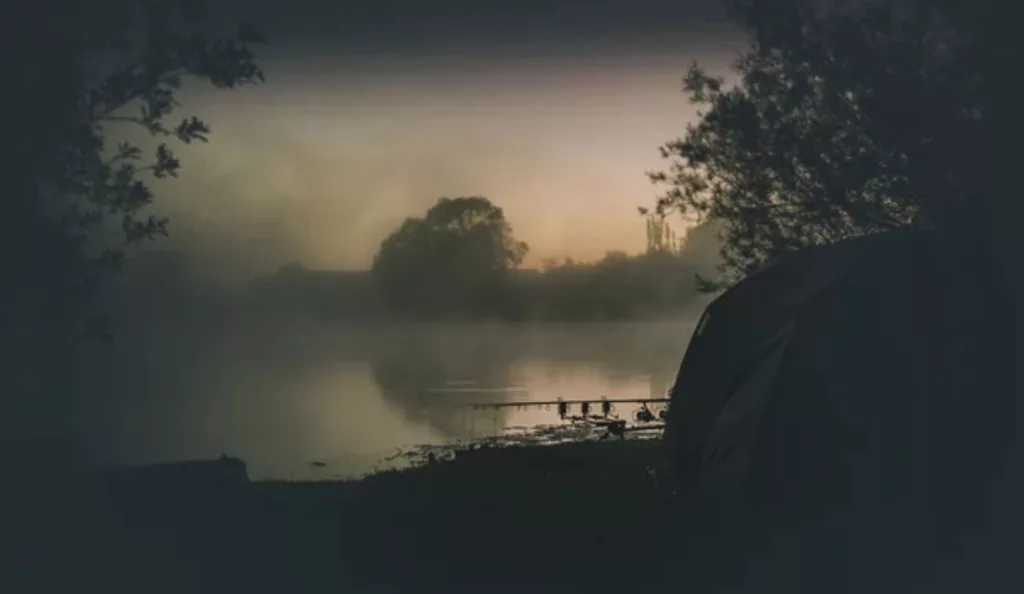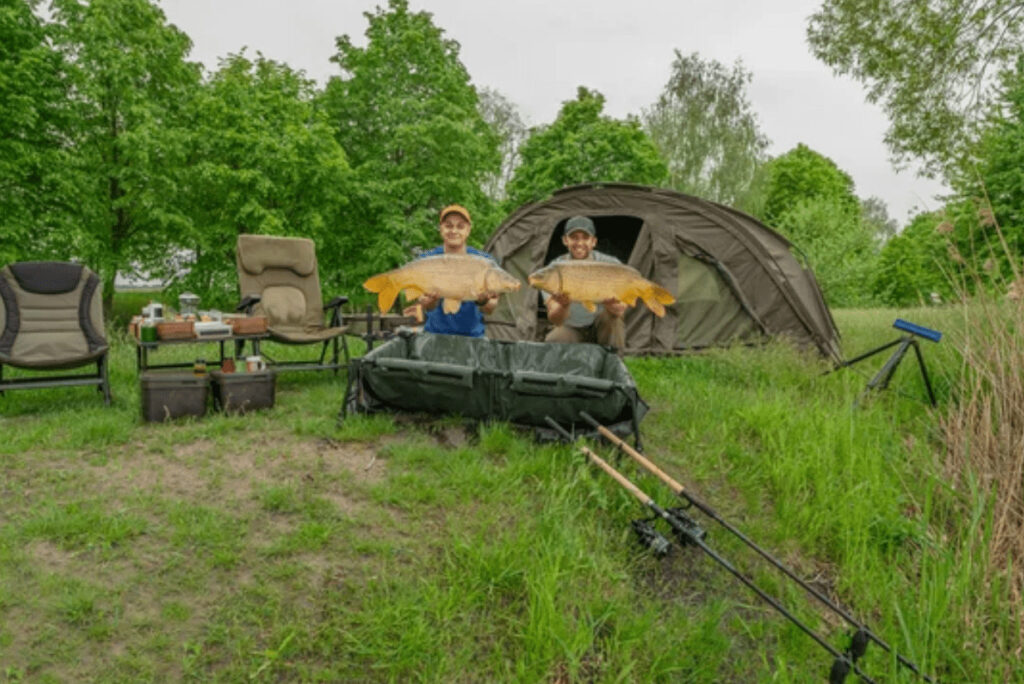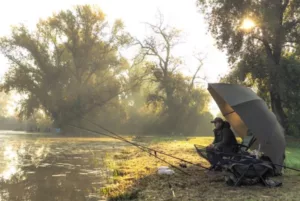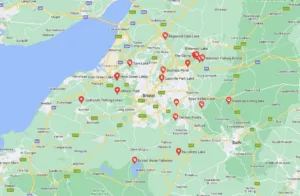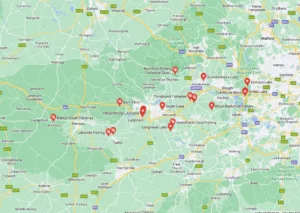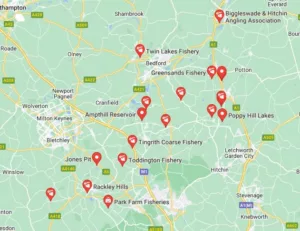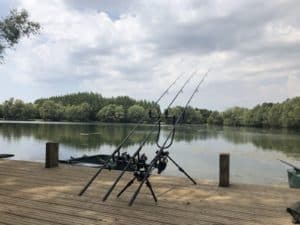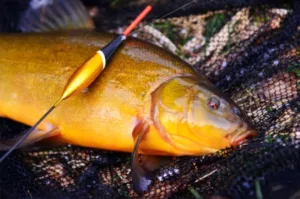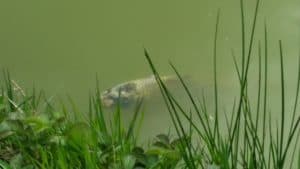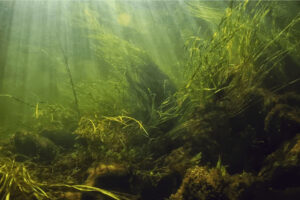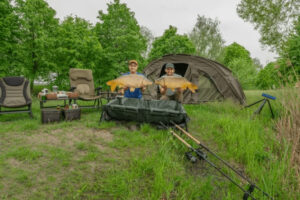Learning how to catch tench can be a great way to enjoy the outdoors and have a chance at catching a big fish. Tench are a type of freshwater fish that can be found in lakes and ponds.
They are known for being picky eaters, so it is important to use the right bait. Some of the best baits for tench include sweetcorn, bread, and worms.
The best time of year to fish for tench is during the spring. This is when the fish wake up from their winter slumber and are more active. When fishing for tench, it is important to be patient.
How to Catch Tench
The tench are great fighters and provide excellent sport for anglers. They will often make good runs when they are caught on the line. They will also often move toward weed beds and vegetation if they are present.
Due to the popularity of tench fishing, there are various tackle pieces and rods designed specifically for this activity. Although these are not ideal, a medium-action rod with a test curve of 1.5 to 2 pounds will do the job well. Hooklinks and a mainline between 4 to 6 pounds are ideal for fishing in areas with dense vegetation and weeds.
When it comes to choosing a tackle, consider the conditions of the area where you are fishing and the size of the fish that you are trying to catch. Having a strong hook is also important since the tench will often eat small baits.
Tench are bottom-feeders, which means they will usually be found near the bottom of the lake or pond. That’s where you’ll want to cast your line. Once you’ve got your bait in the water, wait for a bite. Tench have protruding lips, so you’ll feel a light tugging on the line before you actually see the fish. When you feel that tug, start reeling in slowly. resist the urge to yank on the line as that will just end up breaking it.
What Does a Tench Look Like
Found in most still waters in Europe, tench have reddish brown bellies and flanks and olive green back.
The tench’s body shape is fairly round, and it grows to a large size. The largest tench in the UK is about 15 pounds.
Tench are usually brown-green or pale olive-green on their backs, with golden or cream flanks. Their undersides tend to be flat and pallid orange, and they have rounded fins – which is a common trait among this type of fish. They’re also known for being very slippery because of the thick slime that coats them. This same slime was once thought to have medicinal qualities, hence the name “doctor fish.” The small scales on doctor fish are set deep into its skin, making for a smooth texture.
Tench is a type of fish that shoal in large, complex groups when they’re small. But as they grow older and heavier—some reaching upwards of 7 pounds—they often break off into pairs or smaller groups.
Tench also secrete a lot of slime, which means that anglers’ keeping and landing nets must be cleaned thoroughly after each fishing session; otherwise, a crusty mesh will develop on the netting.
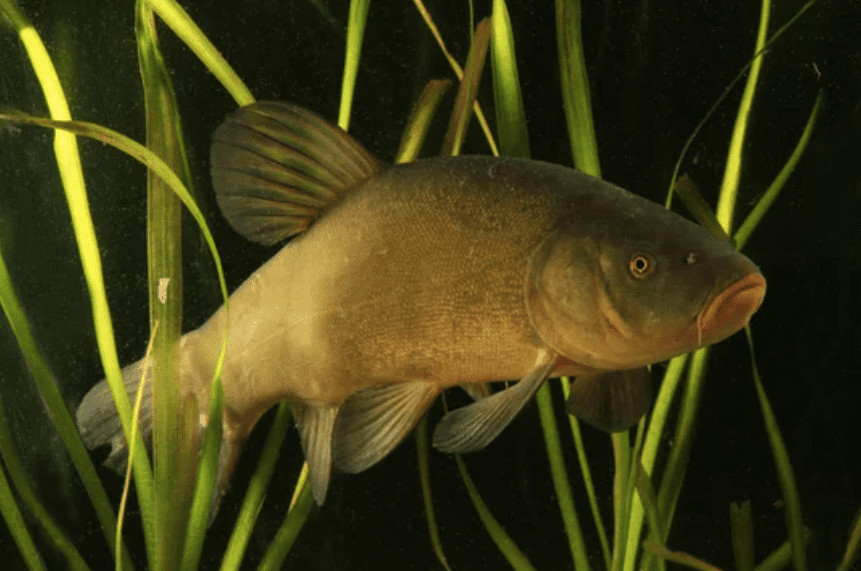
What is the Average Size of a Tench
Tench is a type of fish that usually grow to around 16 to 28 inches long. These fish are related to carp, and they provide great fishing action.
Best Bait for Tench
Tench are attracted to different types of bait in different areas, but some of the most common baits used to catch them include worms, black slugs, and red maggots. Other lures that can be effective in catching tench include bread, sweetcorn, and pellets. In some areas, green peas are considered the best choice for bait when fishing for tench.
Tench love to eat cereal-based ground baits, and they’re also drawn to hemp. This is a fantastic replacement for using maggots as bait.
The tench typically feeds on small crustaceans and microscopic organisms, like daphnia.
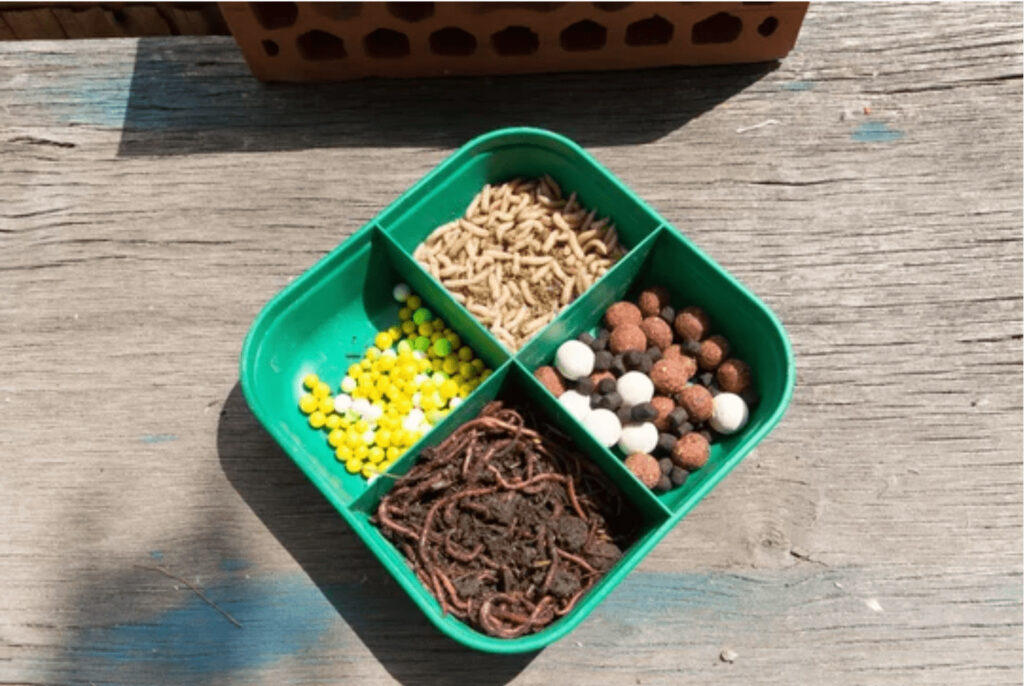
Best Time to Catch Tench
The tench is mainly known to live in shallow vegetation. They are best caught during the early mornings or late evenings of the summer or autumn season.
The tench will usually remain dormant until spring as the first frosts appear. During the winter, tench will feed on a prolonged mild spell. If this happens, they will feed for around an hour during the middle of the day. This is the best time to catch them as they will be able to keep eating for several hours.
Where to Catch Tench
The first thing you should do when it comes to fishing for tench is to find a venue that is known to have tench stocked in the lake. If you are targeting rivers, ask on forums to find out if anyone has caught tench near where you are planning on fishing.
The next thing you should do when it comes to fishing for tench is to find a good location that has plenty of vegetation. This will allow you to catch the fish that are hiding in the weeds.
When the weather is warm and sunny, tench will most likely be active. However, they are less likely to be active when the water is cold.
The tench prefer to be found in muddy or clay-based waters. It is rarely found in areas with clear bottoms. Tench are often found in areas where there is a lot of aquatic vegetation.
Compared to the common carp, the tench is more resilient and can endure lower oxygen levels and higher pollution levels.
Despite being known for their unpredictable behavior when it comes to feeding, tench are generally easier to catch than carp. Also, unlike their cousins, anglers rarely have to wait long for a bite.
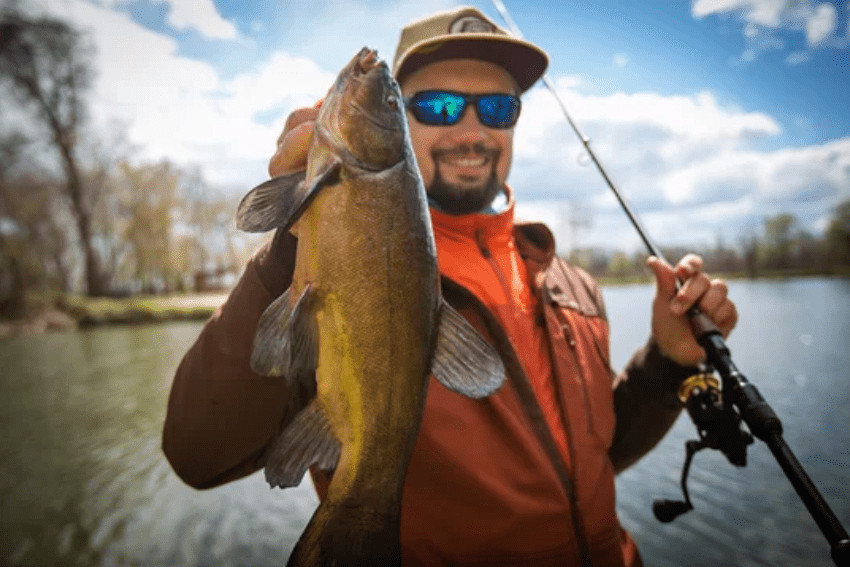
Where to Find Tench
The tench prefer to live in thick silt, mud, and vegetation. Although they sometimes feed on the insects that live on the surface, the bottom is the best place for them as their diet is composed of various aquatic insects, crustaceans, and snails. Like carp, tench will also eat in the mud and silt for food.
The tench will often stay near marginal shelves and weed beds to obtain both food and cover.
They will also give their location away by producing small bubbles as they search for food in the mud and silt. These bubbles can appear in varying patterns and are often the result of the movement of weeds and other aquatic vegetation. Since these signs are subtle, binoculars are often used to find them in large areas.
Float Fishing for Tench
One of the most effective ways to catch tench is by using a waggler float. This type of lure will allow you to fish for them while keeping the line in the water. When you see the fish playing with the lure, do not strike it as this can lead to floating dropping, and lifting.
Legering for Tench
A good way to catch tench is by using a Maggot or an open-ended lure over a bed of hemp. Free samples of the hook bait and ground bait can also work well. Another method is to use a semi-fixed bolt rig that has a bag of pellets attached to it. Tench are known to be picky eaters so try different lures until you find one that they like.
Like with float fishing, the bites can be nervy at first. However, by giving the fish a bit of time to settle, you can expect to see a confident take.
The tench are out-competed for food by carp in certain areas. This means that areas with abundant natural resources, such as weedy gravel pits, can lead to large tench being produced. Conversely, areas with a significant carp population can result in the water becoming weed-free. This means that the tench’s diet is severely limited, resulting in smaller tench being caught.
The Different Types of Bottom Rigs for Tench Fishing
Many anglers consider tench to be one of the most challenging fish to catch. These freshwater fish are usually found in deep water and have a reputation for being very finicky eaters. As a result, it is important to use the right bottom rig when trying to catch tench.
Method Feeder Rig
A method feeder rig is a good option for those who are looking to catch tench in deeper water. This type of rig uses a feeder that is attached to the main line with a swivel. The advantage of this rig is that it allows you to control how much bait is released into the water.
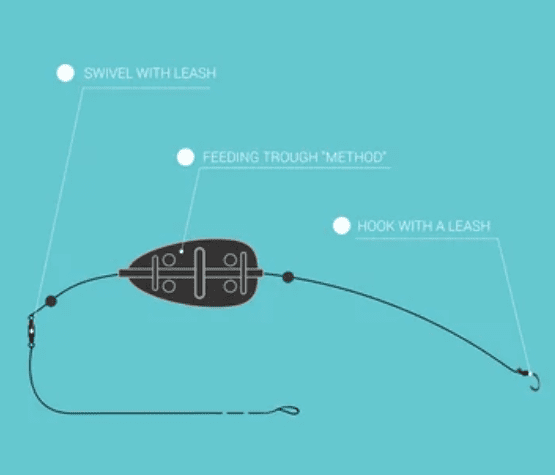
Maggot Feeder Rig
The maggot feeder rig is another good option for those who are looking to catch tench in deeper water. This type of rig uses a feeder that is attached to the main line with a swivel.
Cage Feeder Rig
A cage feeder rig is a good option for those who are looking to catch tench in shallower water. This type of rig uses a cage that is placed over the hook bait. The cage helps to keep the bait in place on the bottom of the lake or riverbed.

Inline Feeder Rig
The inline feeder rig is another good option for those who are looking to catch tench in shallower water. This type of rig uses an inline feeder that is placed over the hook bait.
Lift Method
The lift method is a good choice for anglers who are targeting feeding fish. This type of rig consists of a weight that is attached to the main line with a swivel. The weight helps to keep the bait in place on the bottom of the lake or riverbed.
Tench Fishing Rigs
When it comes to fishing for tench, using the right bottom rig can make a big difference in your success. There are a few different rigs that tend to be effective, including the method feeder rig, the lift method, the maggot feeder rig, and the cage feeder rig.
Each of these rigs has its own advantages, so it’s worth experimenting to see which one works best for you. A method feeder rig is a good option if you’re looking to bait up quickly and efficiently.
The lift method is a good choice if you want to fish over thicker vegetation. The maggot feeder rig is ideal for attracting fish with small baits, while the cage feeder rig is perfect for targeting fish that are holding tight to the bottom.
Whichever rig you choose, making sure it’s well-tied and properly set up will help you maximise your chances of success.
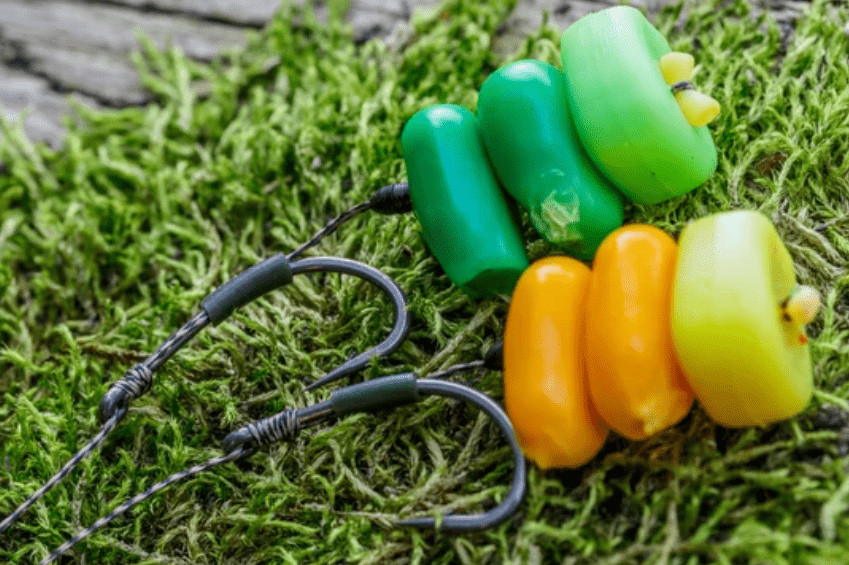
Feeder Fishing
The inline feeder rig has several great features that make it ideal for fishing smaller boilies or pop-ups. It allows you to chuck out a large amount of ground bait that will land next to your hook bait and thanks to the very short hook length, fish almost always bolt themselves against the weight of the feeder, making for firm hooksets.
Another big advantage is that the feeders used are much lighter than normal feeders, so you can cast them much further. This is vital when targeting big fish in open water where they often hold up in the margins. The last thing you want is to be constantly picking up and casting again because your feeder isn’t landing where you want it to. With an inline rig, you can be confident that your feeder will land exactly where you want it to be every time.
Do Tench Spawn
Spawning for tench generally occurs from June to July, although it is later than other species of coarse fish due to the fact that they require water temperatures of 24 degrees Celsius. Earlier spawning can occur depending on seasonal conditions.
The tench’s spawning usually takes place in the early morning. During this period, a couple of males will chase after several females. Once these females deposit their eggs in shallow vegetation, the males will then fertilise them.
The tench’s eggs are usually sticky and stick to the aquatic vegetation. Once the eggs are laid, the tench will emerge around four to six days later. The black stripes and colored eyes of the tench’s larvae serve as their camouflage. They hang from the vegetation for around five to ten days before they can swim away.
The tench’s eggs survive by surviving on algae and other zooplankton. This allows them to continue developing until they reach a size of 12cm. After that, they become carnivorous, which means they consume tiny food particles. They then start to feed on various small crustaceans and freshwater invertebrates.
Unfortunately, catching tench is rarely done as they usually hide in thick weed beds. However, if you do happen to catch one, you might want to check out the black stripes on the underside of their fins.
Tips on Catching Tench
1. Use a Pre-Baiting Strategy
A pre-baiting swim can provide you with an advantage when it comes to catching tench. This method is particularly effective when you are trying to lure the fish out of their sanctuary. Since you are convincing them to come to you, you should ensure that the area is easy to access and free of vegetation. Also, keep in mind that other species, such as bream and roach, will also be attracted to the area.
Don’t try and pre-fish the swim using a big one-off lure. Instead, focus on a well-thought-out technique that will work well for you. If you are lucky enough to have access to the water during certain times of the year, you can also introduce bait every day before you start fishing. This method is ideal during spring as tench wake up from their winter slumber.
A good pre-baiting mix can consist of brown breadcrumbs, sweetcorn, and various other ingredients. However, you can also include other items such as chopped boilies and worms.
2. Take Your Time When Striking
The broad fins of tench make them an ideal choice for anglers who want to have an exciting time while fishing. As previously mentioned, don’t strike immediately after the float has started to move. Instead, wait until the float is under the surface before striking. By doing this, you will have a better chance of hooking the fish.
3. Use Groundbait to Attract Tench
Groundbait is an effective way to attract fish to your swim. This method can be particularly useful when you are fishing in areas with little vegetation. When using ground bait, it is important to ensure that the mixture is not too dense. A good ratio to use is two parts ground bait to one part water.
4. Use the Right Size Hook
The size of the hook that you use will play a significant role in your success when fishing for tench. If you are using a smaller hook, there is a higher chance that the fish will be able to spit it out. On the other hand, if the hook is too big, the tench might not be able to eat it. As a general rule of thumb, use a size 10 hook when fishing for tench.
5. Set Up Your Rig Correctly
When setting up your rig, it is important to ensure that the float is the correct size. If the float is too big, it will be difficult to control. On the other hand, if the float is too small, it might not be able to support the weight of the fish. As a general rule of thumb, use a size 10 float when fishing for tench.
6. Use the Right Bait
Tench are known to be picky eaters, so it is important to use the right bait. Some of the best baits for tench include sweetcorn, bread, and worms. However, you can also use other baits such as maggots and casters.
7. Be Patient
When fishing for tench, it is important to be patient. These fish are not known for being particularly active, so don’t expect to see a lot of action. Instead, focus on enjoying the time that you spend outdoors and wait for the tench to bite.
8. Try Different Techniques
If you are having trouble catching tench, it might be a good idea to try different techniques. For example, you can use a feeder rig or a ledger rig. You can also try fishing in different areas of the water. By trying different techniques, you will eventually find a method that works well for you.
9. Keep Your Bait Fresh
Tench are attracted to fresh bait, so it is important to keep your bait fresh. If you are using live bait, make sure that the bait is alive and healthy. You can also use frozen baits, but make sure that they are thawed before you use them.
10. Be Prepared to Spend a Long Time Fishing
Fishing for tench can be a long and tedious process. These fish are not known for being particularly active, so you might have to wait a while before you see any action. However, the satisfaction that you feel when you finally catch a tench will make the entire process worth it.
FAQ
The best time of year to fish for tench is during the spring. This is when the fish wake up from their winter slumber and are more active.
Some of the best baits for tench include sweetcorn, bread, and worms. However, you can also use other baits such as maggots and casters.
The best size hook to use for tench is a size 10. This will give you the best chance of hooking the fish without it being able to spit out the bait.
The best float to use for tench is a size 10. This will allow you to control the rig better and also support the weight of the fish when it is hooked.
Some different techniques that can be used for tench fishing include using a feeder rig or a ledger rig. You can also try fishing in different areas of the water. By trying different techniques, you will eventually find a method that works well for you.
You can keep your bait fresh by using live bait or frozen baits that are thawed before you use them. Tench are attracted to fresh bait, so it is important to keep your bait fresh if you want to have success.
It can take quite a while to catch a tench. These fish are not known for being particularly active, so you might have to wait a while before you see any action. However, the satisfaction that you feel when you finally catch a tench will make the entire process worth it.
Further Reading
I have made a lot of mistakes during my fishing sessions and don’t want you to make the same mistakes. I’ve learned the hard way over 20 years of fishing most weekends, testing, tweaking, and testing again and now want to help you excel with your carp fishing.
If you need any help, you can reach me at Fishing Again’s Facebook page
Last Updated on February 20, 2024 by Shane

